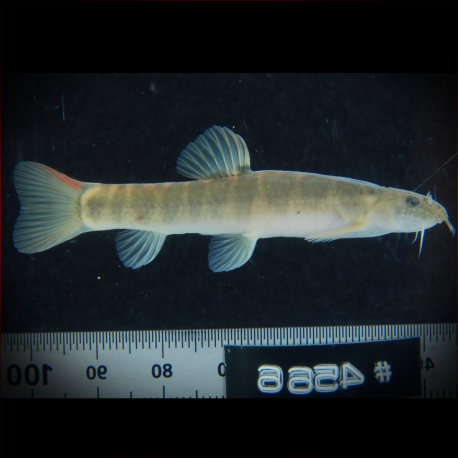More info
Datasheet
| Minimum Tank Size | 90 litres / 23.78 US gallons |
| Temperature | 18°C / 64.40°F - 24°C / 75.20°F |
| Hardness | 2.02dgH / 36ppm - 12.05dgH / 215ppm |
| pH | 6.0-7.5 |
Behaviour
The Ring Loach is known for its peaceful nature, particularly with conspecifics, making it ideal for group maintenance with the recommendation of four or more individuals. It thrives when kept with tankmates that inhabit similar biotopes, with peaceful, open water-dwelling cyprinids being among the best options. Sand-dwelling loaches such as Acanthopsoides or Canthophrys species can also be suitable companions. While some similarly-shaped relatives may be territorial or aggressive, a well-chosen combination can work in larger aquarium setups.
Feeding and Diet
The common diet of the Ring Loach consists of small insects, worms, crustaceans, and zooplankton, with minimal plant matter and organic detritus consumed. In aquariums, it accepts dried foods but should not be fed exclusively with them. A diet consisting of small live and frozen foods like Daphnia, Artemia, and bloodworms ensures the best coloration and condition for these loaches.
Reproduction & Dimorphism
Information regarding the reproduction of the Ring Loach is unreported, leaving details about this aspect unknown. Certain species within the Schistura genus exhibit clear sexual dimorphism, with unique morphological and behavioral characteristics contributing to their distinguishing features.
Habitat and Distribution
The exact habitat of the Ring Loach is unconfirmed, but it is likely to dwell over sand or other soft substrates in nature, displaying a burying behavior when startled. Specimens for the aquarium trade are typically collected from the Torsa River near Cooch Behar in Northern West Bengal state, India. The Torsa River, a tributary of the Brahmaputra system, originates in China, flows through Bhutan and West Bengal, and finally enters the Brahmaputra in Bangladesh.
Aquarium Setup
The Ring Loach is not challenging to maintain given the right conditions. A tank setup with a substrate comprising sand to allow for burying behavior is recommended. Smooth rocks and driftwood can be added to create hiding spots and shaded areas. Including aquatic plants like Microsorum, Bolbitis, or Anubias species is beneficial, especially because they can be attached to the decor. While torrent-like conditions are not necessary, maintaining high dissolved oxygen levels and some water movement in the tank is advantageous. The Ring Loach is intolerant of organic pollutants, necessitating spotless water to thrive, with weekly water changes of 30-50% tank volume being crucial for its well-being.

